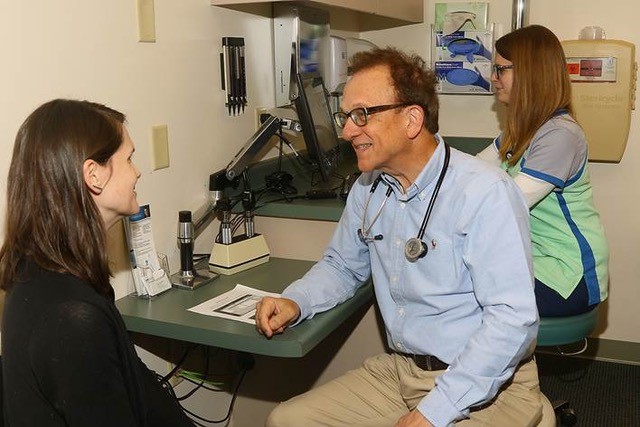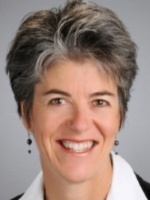Summary:
An investment in medical assistants allows clerical work to be strategically shared while doctors focus on patient care.
An investment in medical assistants allows clerical work to be strategically shared while doctors focus on patient care.
A powerful intervention has emerged to aid physicians in reducing or eliminating the at-home hours spent documenting patient care in the electronic health record.
That intervention—a combination of team-based care and exam-room support—has put a dent in EHR “pajama time,” a term and task that physicians often dread and leaves them suffering from burnout.
“We’re utilizing our medical assistants as scribes to help assist our providers with some of the burden of electronic health record documentation,” said Kevin Hopkins, MD, medical director of the Strongsville Family Health and Ambulatory Surgery Center in Strongsville, Ohio, one of 17 Cleveland Clinic freestanding facilities.
While an assistant transcribes on a desktop, Hopkins can focus solely on the patient. “I don’t touch the computer while I’m in the exam room,” he said. Before he even enters, an assistant has recorded the patient’s vital signs and pulled up the prior acute or chronic disease notes to append to during the visit.
Hopkins started approaching documentation this way six years ago. At first, there was a learning curve for the medical assistant and more editing for him to do. It took seven to 10 minutes to review and close a chart. Now, it takes a minute or two.
Three other physicians in the clinic rely on two medical assistants who have been trained to cross-cover for each other. In 2011, the second assistant joined their practice from another position at Cleveland Clinic.
“I saw the benefit of bringing a second medical assistant on board as an upfront investment in long-term efficiency,” said Hopkins, who increased his productivity from seeing an average of 21 to 27 patients per day.
A study, published in September 2017 in the Annals of Family Medicine , found that physicians spend nearly six hours of an 11.4-hour workday on EHR. That includes nearly 90 minutes after work. The EHR breakdown was 44 percent on administrative tasks, 33 percent on care and 24 percent on inbox management.

James Jerzak, MD, and certified medical assistant Jami Burroughs, right, use a team-based approach to documentation at Bellin Health in Green Bay, Wisconsin. | Bellin Health
Heightened awareness of the amount of time spent on the EHR after hours is the first step toward reducing pajama time. By using specific tools from software vendors, organizations can track how often physicians perform documentation tasks after-clinic hours and on weekends, quantifying the magnitude of the problem, said Christine Sinsky, MD, FACP, vice president of professional satisfaction at the American Medical Association and a co-author of the study.
“Organizations can develop stronger team-based care, so that all of the clerical work is not on the physician’s shoulder but instead is shared strategically with different members of the team,” said Sinksy, who also works in a physician-owned independent practice in Dubuque, Iowa.
Neither Sinsky nor her husband, Thomas Sinsky, MD, takes EHR work home. The general internists credit their advanced model of team-based care, with 2.5 nurses per physician, as the main reason for avoiding pajama time. Their nurses help with various tasks involving prevention and standard chronic care as well as assist with documentation and inbox management.

Christine Sinsky
“Another efficiency, dictation to transcription, can also reduce the need to take documentation work home at night,” Christine Sinsky said. “With our previous EHR, which we had for 12 years, we were able to dictate to transcriptionists. I would estimate the total time for documentation to be about one-third with dictation to transcription, compared to voice recognition or manually typing the note.”
Cornerstone Health Care P.A. in High Point, North Carolina, has trained medical assistants to close a lot of care gaps, said Elisabeth Stambaugh, MD, MMM, chief medical officer at the physician-owned group, an affiliate of Wake Forest Baptist Health in nearby Winston-Salem.
They act as scribes while the provider is in the room, documenting patient visits and handling pre- and post-appointment notes. “They follow the patient through the entire encounter, so we call them encounter specialists,” said Stambaugh, who practices as an obstetrician-gynecologist.
The team-based approach has boosted physician productivity, freed up time for doctors to function primarily as doctors and alleviated burnout from doing documentation work at home.
“We’ve had such great success with it,” she said.
Susan Kreimer is a freelance health care journalist based in New York.
Topics
Technology Integration
Strategic Perspective
Quality Improvement
Related
Care InnovationWhat the Air You Breathe May Be Doing to Your BrainNew Research on How Women in Leadership Navigated MenopauseRecommended Reading
Quality and Risk
Care Innovation
Quality and Risk
What the Air You Breathe May Be Doing to Your Brain
Problem Solving
New Research on How Women in Leadership Navigated Menopause
Problem Solving
A Smarter Way to Disagree
Operations and Policy
Managing a Slob
Operations and Policy
Managing Your Team’s Weakest Link


